Cracksealing
Commercial Cracksealing Services by Express Asphalt Solutions
Crack sealing is a vital preventive asphalt maintenance technique that helps combat pavement damage and extends the life of your parking lot. Asphalt crack sealing is also an efficient way to reduce further deterioration, delay costly asphalt replacement, and preserve the visual appeal of your pavement.
Express Asphalt Solutions is a trusted paving company with decades of experience, offering services across all of Florida. Contact Express Asphalt Solutions today for a free estimate for your parking lot.
What is Cracksealing
Cracksealing is a proactive asphalt maintenance technique that applies a specialized adhesive sealant to fill and seal cracks in the pavement. This affordable treatment helps prevent additional damage, safeguarding the asphalt and extending its lifespan by three to five years.
Indicators That Your Pavement Requires Cracksealing
If cracks are appearing in your pavement, it’s important to act quickly. Addressing them early can prevent more severe and costly damage. The sooner you seal pavement cracks, the more you save on future repairs.
Smart business owners and property managers understand that routine pavement inspections and a proactive maintenance plan help prevent larger issues over time. If you notice any of the following types of cracks in your parking lot, reach out to Express Asphalt Solutionsfor a professional cracksealing consultation.
Indicators That Your Pavement Requires Cracksealing
Reflective cracks frequently appear in resurfacing projects and can also develop in new pavement. They form when existing cracks or joints in the underlying pavement structure extend upward through the surface layer.
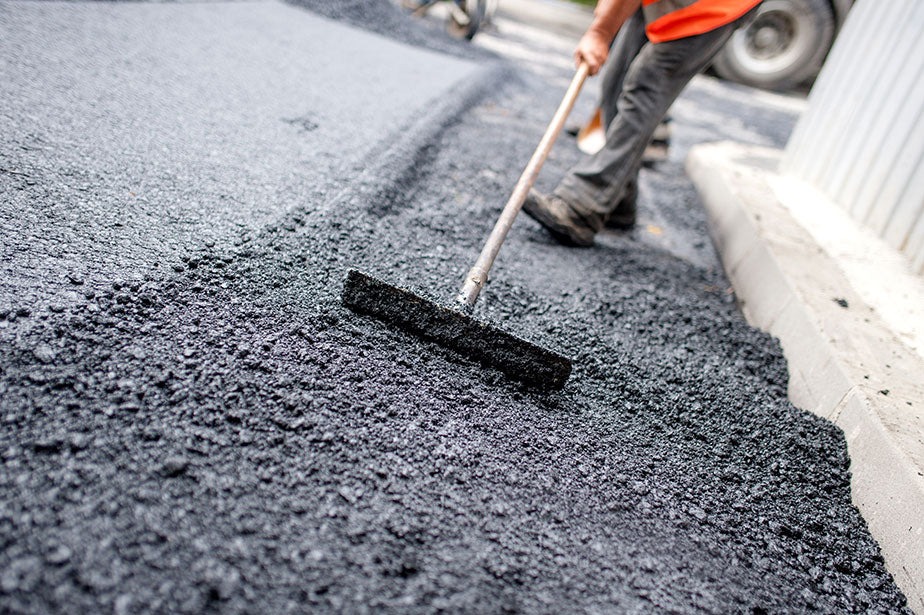
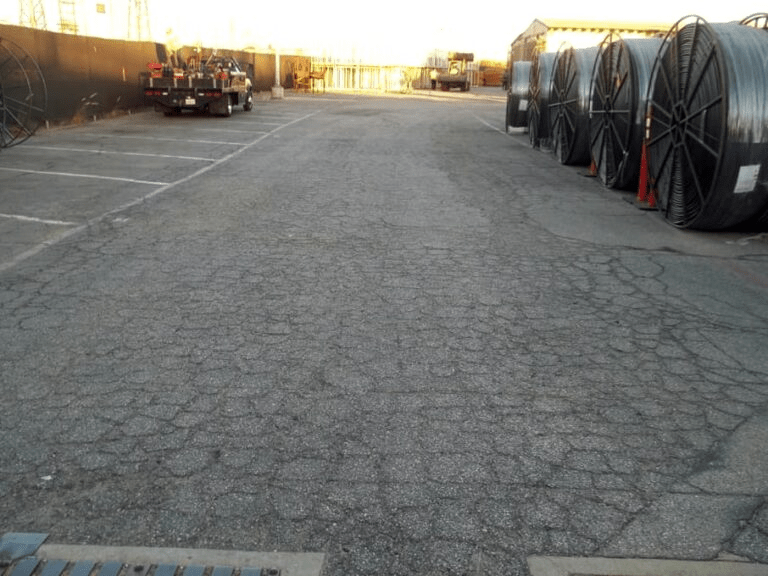
Fatigue or Alligator Cracks
As asphalt pavement ages, it becomes more rigid and susceptible to cracking under pressure. This stress leads to a characteristic alligator-type cracking. Fatigue cracking can also stem from structural weaknesses, aging, and oxidation. In many cases, rather than sealing or filling these cracks, the damaged areas should be removed and replaced to ensure long-term durability.
Joint and Longitudinal Cracks
Joint cracks appear along the seams where two pavement sections meet during construction. These areas typically have lower asphalt density than the surrounding pavement, making them more prone to cracking. If the pavement mats do not bond properly due to material or installation issues, longitudinal cracks may form along these joints.
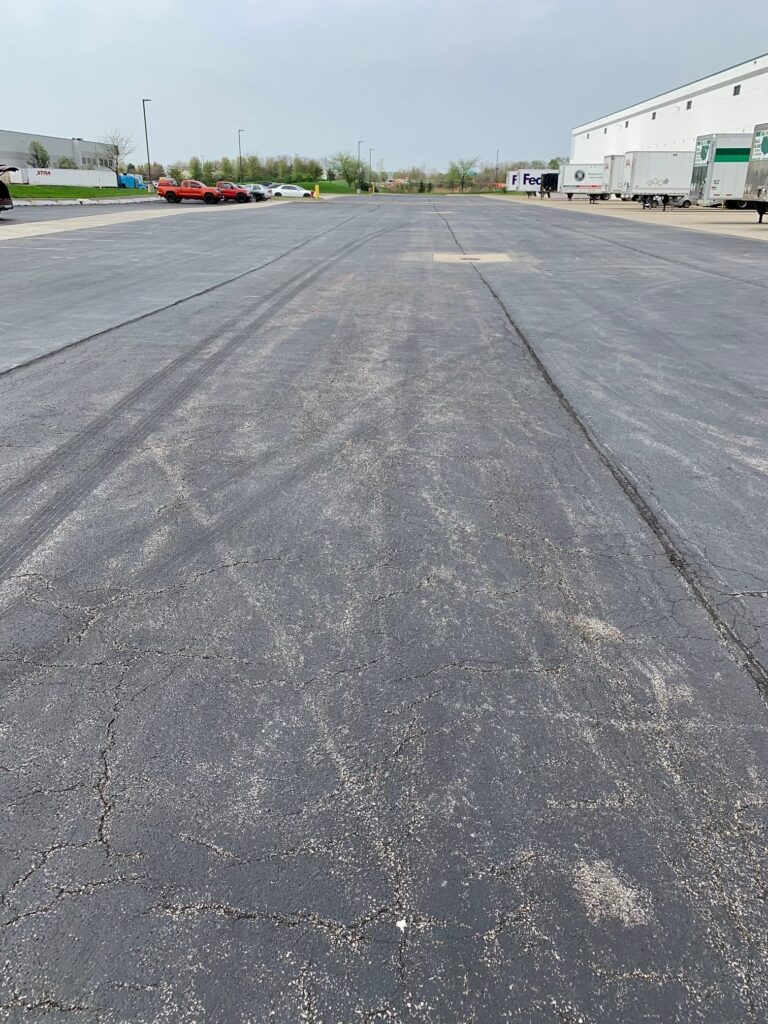
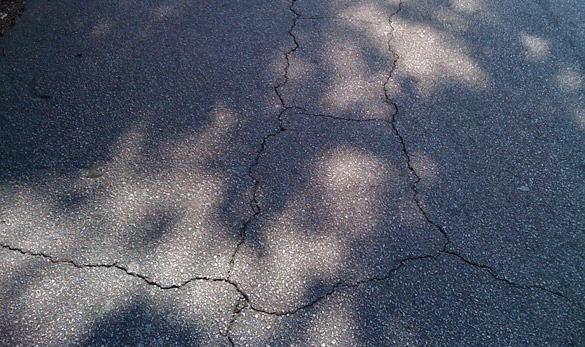
Block Cracks
Block cracking consists of interconnected cracks forming square or rectangular patterns. In parking lots, a primary cause is limited traffic, as regular vehicle movement helps maintain asphalt flexibility. Other factors include air voids, low-penetration asphalt, or excessively high mix temperatures during installation.
Edge Cracks
If you spot potholes, pavement heaving, uneven surfaces near catch basins, or rough patches in drive lanes. This advanced method fuses hot-mix asphalt with the existing surface and compacts it, ensuring a smooth, seamless restoration.
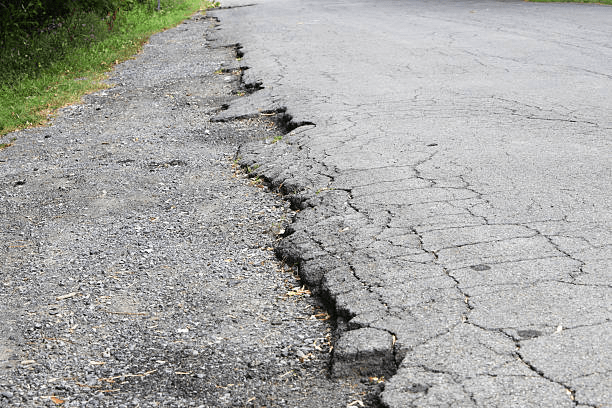
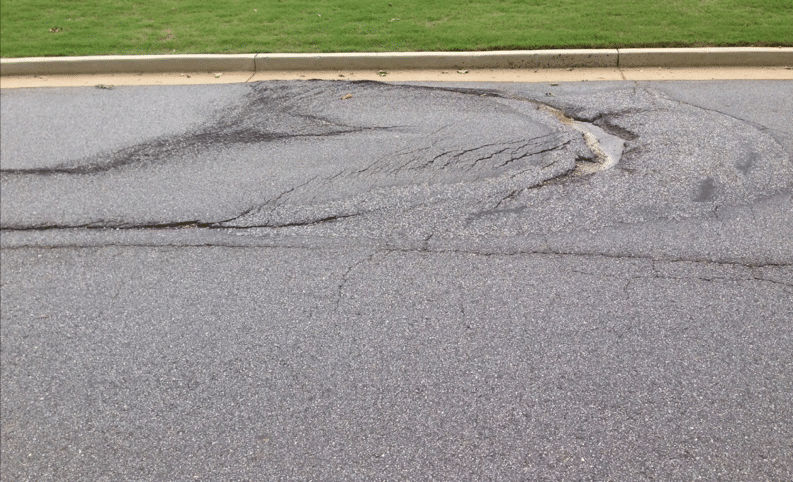
Slippage Cracks
Slippage cracks are crescent-shaped cracks caused by heavy traffic braking, turning, or accelerating on inclines. These forces lead to bond failure between pavement layers, often due to contaminants. The open end of the U-shaped crack always points in the direction of applied force.
Repair Methods for Cracks in Asphalt
Addressing parking lot cracks promptly is a cost-effective way to prevent costly asphalt repairs like resurfacing or reconstruction. To preserve pavement integrity, budgeting for crack sealing every 2 to 3 years is highly recommended.
Crack Sealing Method
For cracks ranging from ¼ inch to 1 inch wide, crack sealing is a highly effective repair technique. The process includes:
- Cleaning the Cracks – A high-powered air compressor clears out dust and debris.
- Applying Sealant – Hot-pour material is injected into the crack using a precision wand.
- Shaping the Seal – The sealant is spread in a band-aid configuration (3 to 5 inches wide and approximately 0.125 inches thick) for durability.
The right sealing method depends on factors such as crack type, traffic conditions, and budget.
Crack Routing & Sealing Method
For high-traffic areas like industrial facilities, crack routing improves adhesion and extends the repair’s lifespan. This method involves:
- Creating a Reservoir – A routing machine widens the crack, forming a ½-inch deep by ½-inch wide channel.
- Cleaning the Channel – A high-powered air compressor removes dust and debris from the routed crack.
- Filling the Crack – Heated sealant is injected and flush-filled using a specialized wand tip.
Crack Sealing Materials & Application
Hot-applied sealants must be prepared in specialized equipment, such as a double-boiler kettle with an inner mixing chamber and an outer heat transfer oil tank for even heating. Sealants are heated to 375–400°F and may include:
- Rubberized asphalt – Enhanced with melted rubber for flexibility.
- Low-modulus rubberized asphalt – Designed for high-movement areas.
- Fiberized asphalt – Strengthened with fibers for added durability.
- Asphalt rubber – A blend of paving-grade asphalt cement and 15–30% reclaimed crumb rubber for superior performance.
By selecting the right crack repair method, property owners can extend pavement life, lower long-term maintenance costs, and improve surface durability.
How Long Does Crack Sealing Last?
Although crack sealing may cost more than crack filling, it delivers better long-term value by significantly prolonging pavement life—often lasting eight years or more.
How Often Should Crack Sealing Be Done?
As part of routine parking lot maintenance, cracks between ¼ inch and 1 inch wide should be sealed regularly to prevent further deterioration.
When is the Best Time for Crack Sealing?
For optimal results and long-term pavement protection, scheduling crack sealing during the spring and summer months is recommended.
How to Fix Asphalt Cracks
Cracked asphalt isn’t just unsightly—it can also create safety hazards and potential liabilities for property owners. If your commercial property has pavement cracks, it’s crucial to take action.
Express Asphalt Solutions specializes in expert crack repair services tailored to your needs. Our team will assess the damage, develop a customized maintenance plan, and efficiently repair or replace deteriorated asphalt to restore your pavement’s integrity. Contact Express Asphalt Solutions today to get started!
Contact us for a free project estimate
"*" indicates required fields
Browse More Services
Express Asphalt Solutions has decades of asphalt, concrete, and maintenance experience across a wide range of markets.

Pavement Marking and Striping
Introduce some order to the chaos of your unmarked lot with Express Asphalt Solutions parking lot marking.

Paving
Asphalt pavement is utilized in a variety of different applications.

Cracksealing
Cracksealing halts the spread of existing cracks and increases the overall lifespan of your pavement.

Sealcoating
A sealcoat consists of either coal tar pitch or asphalt cement mixed with inert fillers, water or additives.

